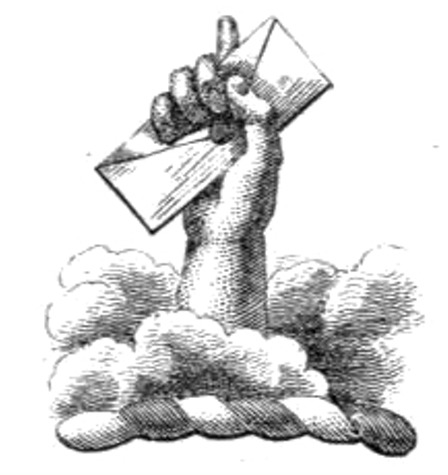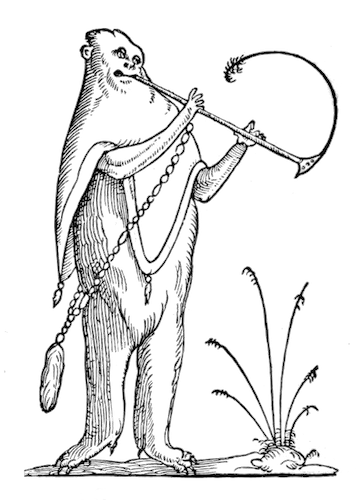
Charles Butler’s The Feminine Monarchie, or the History of Bees (1634 edition)
Since at least the time of Ancient Greece and Rome, beehives have served as foils for the polis — as their workers, drones, and queens can seem to reflect classical ideals of governance, such as Plato’s tripartite division of city-states into the worker, soldier, and guardian class. Aristotle called bees zoa politika (political animals); in the Georgics, Virgil finds a natural social order in the divided labor of apian colonies. As political systems dissolved and reformed, so too did the perception of bees. In the Elizabethan era, the hive became a monarchy, as described in Henry V: “So work the honey-bees / Creatures that by a rule in nature teach / The act of order to a peopled kingdom. / They have a king and officers of sorts”. Writing circa 1599, Shakespeare was evidently not abreast of the latest apian news: gazing into a hive in 1586, the Spanish entomologist Luis Méndez de Torres realized that bees are ruled not by a king, but by her majesty, the queen. (Or, in Méndez de Torres’ phrase, la maessa de enjambre, the mistress of the swarm.)
The first work of its kind published in English, The Feminine Monarchie, or the History of Bees (1609) by Charles Butler, a priest and logician, remained an influential handbook on apiculture for several centuries. Written six years after the death of Elizabeth I and dedicated to the Queen of England, the bee’s knees incarnate, his book buzzes with first-hand observations of the insects he kept at his Hampshire parsonage, whom he calls “the muses’ birds”. He reveres the creatures, and his suggested protocols for earning their respect could almost be mistaken for a religious purity code. Since bees are “most chaste and neat”, they “utterly abhor” eaters of leeks, onions, and garlic; since they are sober and hardworking, they will “violently defend” themselves if approached by drunken, surfeiting subjects. One gradually gets the sense that Butler longs to be a bee, or, at least, live in a bee-like colony. “Unto the industrious nature of bees nothing is more odious than sloth and idleness.” His only grudge is with the drone bee, who deviates from the Protestant work ethic, for “he worketh not at all, either at home or abroad, and yet spendeth as much as two labourers”.
Illustration concerning the arrangement of hives, from the 1623 edition of Charles Butler’s Feminine Monarchie — Source.
Prefaced by a dedicatory poem, The Feminine Monarchie gets figured by the poet George Wither as a hive, and its author a kind of industrious worker secreting knowledge’s nectar into cell-like chapters: “Like his Bees, [our author] makes honey too for us. / As is contended that, to help us thrive, / We should partake the profit of his Hive.” Each chapter pivots between practical knowledge (the construction and dressing of dwellings, the use of summer vs. winter doors, the insulating benefits of “hog foam” and salivary froth) and theological takeaways about a divine, natural order led by a female monarch. We learn that the bee has many enemies, and that it is our human obligation to defend them against mice, swallows, hornets, wasps, spiders, and even the weather. In one of the strangest passages in the book, Butler relays a story about a colony infected by the plague whose beekeeper, regurgitating Sunday mass’s sacramental bread into the hive, returns to find “a chapel built by the Bees with an altar in it, the walls adorned with marvelous skill of architecture with windows conveniently set in their places. . . . And the host being laid upon the altar, the bees making a sweet noise flew round about it.”
The Feminine Monarchie proliferates with sweet noises. (Butler would go on to publish a Principles of Musick in 1636.) Perhaps the most memorable is a sheet music composition enclosed in the book’s pages that is meant to mimic the “piping” of queen and princess bees, a “begging song” of the latter to the former. Subsequent editions of the text (1623, 1634) expand the song into a harmonious four-part madrigal titled Melissomelos, whose lyrics hum with Butler’s primary thesis, the supremacy of female rulers: “As of all states the Monarchie is best, / So of all Monarchies that Feminine, / Of famous Amazons excels the rest”.
An ardent spelling reformer, who published an English Grammar in 1633, Butler revised the orthography of the later editions of The Feminine Monarchie to rectify what he perceived as a Babelian state of his mother tongue’s letters: “many words in our language are written diversly, even at home: neither our new writers agreeing with the old; nor either new or old among themselves.” Across his career, Butler sought a natural, consistent order — on the page and in politics — modeled perhaps on what he once described as “A Perfect Monarchie, The Most Natural and Absolute Form of Government”. Not the Royal Court, that is, but the beehive.
Enjoyed this piece? We need your help to keep publishing.
The PDR is a non-profit project kept alive by reader donations – no ads, no paywalls, just the generosity of our community. It’s a really exciting model, but we need your help to keep it thriving. Visit our support page to become a Friend and receive our themed postcard packs. Or give a one-off donation. Already a supporter? A huge thank you for making all this possible.
May 13, 2025







